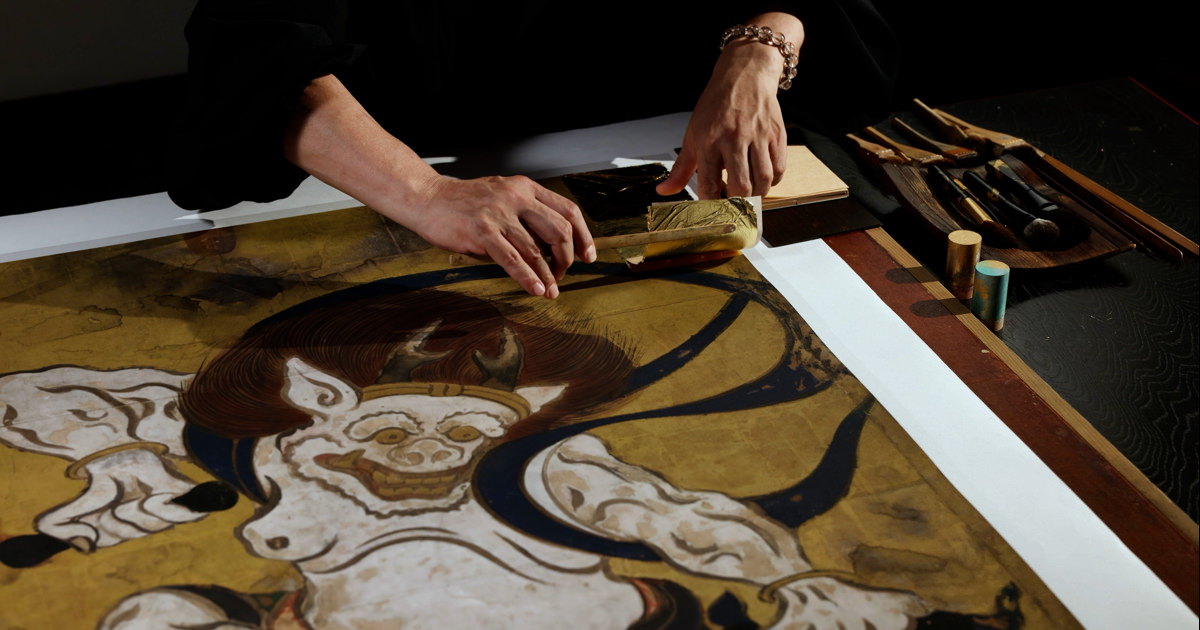Kanō Motonobu / National Museum of Asian Art, Smithsonian Institution, Freer Collection, Purchase — Charles Lang Freer Endowment, F1955.26
These images are based on the high resolution facsimile produced by the Tsuzuri Project. Unauthorized copying, duplication, or transfer of these images is strictly prohibited.
Landscapes, flowers, and trees of the four seasons
High-resolution facsimiles
- Material
- printed, gold on washi paper/printed on silk
- Period of creation
- Tsuzuri Project Stage 16 2023–2024
- Recipient
- Kyushu National Museum(National Institutes for Cultural Heritage)
Original
- Artist
- Kano Motonobu
- Historical era
- Muromachi (16th century)
- Material
- Ink, color, and gold on paper/ink on silk
- Medium
- Pair of six-fold screens
- Size
- Each screen H156.4 × W355.6 cm
(Each silk section H81.5 × W45.3cm) - Collection
- Smithsonian's National Museum of Asian Art
Description
This is the one and only one among all works by Kano Motonobu. Motonobu is known as the first painter of the Kano school to combine Chinese and Yamato-e painting styles, and these folding screens show his pioneering achievement. The chinese-style ink landscapes on silk and the vivid Japanese flowers on the gold ground, all painted by Motonobu himself, are reminiscent of the paintings that adorned the lavish alcoves of 16th-century residences of feudal lords.




